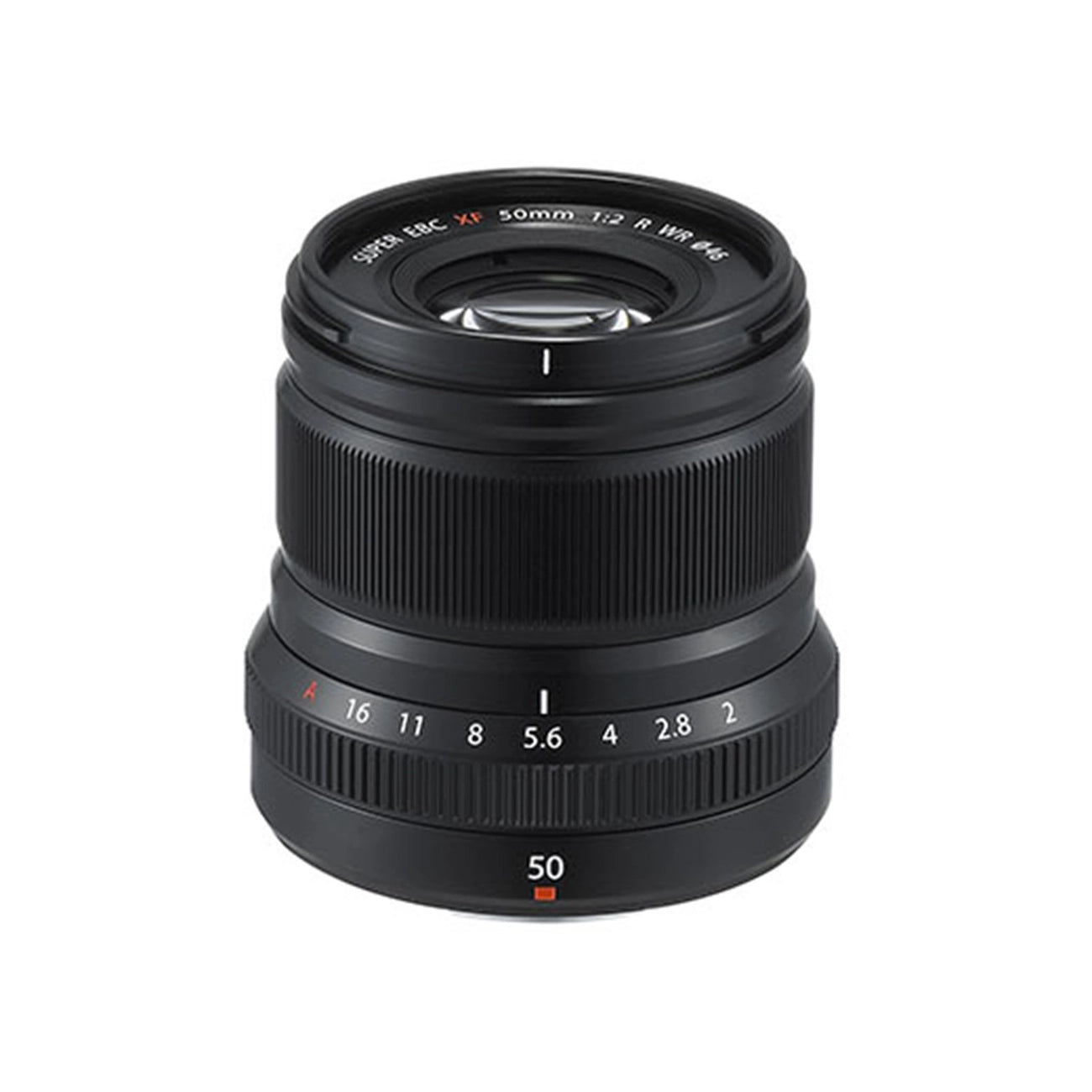What we think...
Product Description
Fujifilm XF 50mm f/2 R WR Lens – Black
Compact, Sharp, and Built for Everyday Photography
The Fujifilm XF 50mm f/2 R WR Lens is a premium mid-telephoto prime designed for Fujifilm X Series mirrorless cameras. Combining exceptional optical performance, a bright f/2 aperture, and robust weather sealing, it’s the ideal choice for photographers who value image quality, portability, and durability.
Perfect for portraits, street photography, and candid moments, this compact lens delivers sharp, high-contrast images with beautifully soft background blur, even in challenging light.

🌙 Key Features
Mid-Telephoto Focal Length
-
Offers a 75mm equivalent focal length (in 35mm format) — ideal for flattering portraits, street scenes, and natural perspective shots.
-
Provides a comfortable working distance from your subject, perfect for discreet and candid photography.

Bright f/2 Maximum Aperture
-
The wide f/2 aperture produces smooth, creamy bokeh and excellent background separation.
-
Enables faster shutter speeds and superior low-light performance, ensuring crisp, detailed results even indoors or at dusk.
Exceptional Optical Design
-
Features 9 elements in 7 groups, including 1 aspherical ED element that suppresses chromatic and spherical aberrations.
-
Delivers outstanding sharpness, contrast, and clarity from edge to edge, even at wider apertures.
-
Produces consistent image quality across various focusing distances and lighting conditions.

Fast, Silent Autofocus
-
The inner focusing system driven by a stepping motor ensures quick, accurate, and near-silent autofocus performance.
-
Ideal for both photography and video, ensuring smooth focus transitions without distraction.

Compact and Lightweight Design
-
Weighs just 200g and measures 59.4mm in length, making it the perfect companion for travel, street, and everyday photography.
-
The premium metal barrel offers a durable, stylish feel while maintaining Fujifilm’s signature tactile precision.
Weather-Resistant Construction
-
Sealed at 10 key points to protect against dust, moisture, and freezing temperatures down to -10°C.
-
Pairs perfectly with weather-sealed Fujifilm cameras such as the X-T series and X-Pro series for reliable performance in tough conditions.

🎯 Benefits for Photographers
-
Portrait Excellence: The 75mm equivalent focal length and f/2 aperture deliver flattering compression and beautiful subject isolation.
-
Street-Friendly Design: Compact, discreet, and responsive — ideal for capturing candid shots without drawing attention.
-
Reliable in Any Weather: Built to perform in challenging environments when paired with Fujifilm’s WR camera bodies.
-
Lightweight Portability: At just 200g, it’s easy to carry all day — perfect for travel and on-the-go shooting.
-
Crisp and Clear Results: Fujifilm’s renowned colour science and optical design ensure vibrant, true-to-life images.
📊 Technical Specifications
| Specification | Detail |
|---|---|
| Focal Length | 50mm (75mm equivalent on APS-C) |
| Maximum Aperture | f/2 |
| Minimum Aperture | f/16 |
| Lens Construction | 9 elements in 7 groups (1 aspherical ED element) |
| Filter Size | 46mm |
| Dimensions (DxL) | 60mm × 59.4mm |
| Weight | 200g |
| Weather Sealing | Yes – sealed at 10 points |
| Operating Temperature | Down to -10°C |
💡 Why Choose the Fujifilm XF 50mm f/2 R WR?
-
Superior Optics: Delivers razor-sharp images with minimal distortion or aberration.
-
Durable Build: Weather-resistant design for shooting in all environments.
-
Effortless Handling: Compact, lightweight, and beautifully balanced for intuitive use.
-
Creative Freedom: Excellent for portraits, travel, lifestyle, and low-light photography.
📷 Compact Power for Every Scene
Whether you’re capturing street scenes, natural portraits, or travel moments, the Fujifilm XF 50mm f/2 R WR Lens delivers professional-quality results in a sleek, portable design. Its fast aperture, refined optics, and weather-resistant construction make it a go-to lens for photographers seeking a perfect blend of performance, reliability, and creative potential.
Fujifilm - General Product Safety Regulation (GPSR)
Payment & Security
Your payment information is processed securely. We do not store credit card details nor have access to your credit card information.



















